$0 Fee, Until You WIn
-
Open 24 hours
-
1526 W Ute Blvd Suite 110, Park City, UT 84098
10 Easy Ways to Get More Value Out of Your Personal Injury Case

Coping with physical, emotional, and financial stress after a personal injury can be overwhelming. However, taking the right steps can make a significant difference in addressing these challenges effectively. Understanding how to navigate the complexities of the claims process and knowing what strategies to employ can greatly impact the value of your case. Here, we present you with 10 practical strategies that can help you maximize the value of your personal injury claim.
1. DON’T IGNORE FOLLOW-UP MEDICAL CARE.
After your initial diagnosis and urgent care visit, ensure that you follow through with your prescribed treatments. The necessity of continued care is apparent for severe injuries like burns, fractures, and such. However, it isn’t always obvious for soft tissue injuries or mild traumatic brain injuries. If you persistently experience symptoms like headaches, discomfort, pain, or numbness, you must revisit your doctor.
Continued treatment is particularly vital for severe injuries until full recovery or till there’s nothing more doctors can do. Understandably, patients suffering from severe injuries often experience “treatment fatigue”, leading them to halt treatment prematurely. It’s vital to note that prematurely stopping treatment won’t benefit your personal injury claim.
Moreover, seeking top-quality treatment is key. For instance, insist on a plastic surgeon for stitches, especially for facial injuries. For enduring pain arising from disc injury despite medication and therapy, consult with an orthopedic surgeon or neurosurgeon. Don’t rely solely on general practitioners, chiropractors, or therapists; utilize all available resources for optimal recovery.
You may be concerned about the costs of continued treatment. If you have health insurance, it should cover most of your medical expenses, and the remainder can often be deferred until you receive your settlement. If you’re uninsured, you’ll need to ascertain other available insurance, such as workers’ compensation insurance or insurance from the party responsible for your injury. These could range from automobile, homeowners, or commercial general policies. Once you have enough insurance coverage for your medical treatment, continue receiving the best treatment possible.
2. ESTABLISH CLEAR COMMUNICATION WITH MEDICAL PROFESSIONALS.
It’s essential to clearly inform your doctor about all your discomforts and symptoms. This is not a time to downplay your pain — remember, your doctor can only treat what they know about. Accurately detail your symptoms to the medical staff without exaggeration.
Bear in mind that everything you discuss during your hospital or doctor’s visit will be recorded in your medical notes, including details about the accident. Don’t speculate about the accident’s details – incorrect information could potentially cause issues later.
Ensure your doctor documents the need for any future treatments in your medical notes. If they recommend a future surgery, ask them to mention this in their notes. Ensuring important information is recorded can save time and avoid potential confusion later.
If possible, take a trusted family member to your medical appointments. They can be a valuable ally, helping explain how your injury affects your day-to-day life, especially if you find speaking about your condition uncomfortable. They can also help you recall what was discussed during your appointments and provide emotional support during what can often be stressful experiences. In addition, their presence during discussions about future treatments can help validate your claims if necessary.
Navigating medical appointments can be challenging and emotional, but clear and honest communication, along with the support of a loved one, can make your visits more productive and less stressful.
3. SECURE LETTERS FROM SUPERVISORS, COLLEAGUES, AND PROSPECTIVE EMPLOYERS TO SUPPORT YOUR LOST WAGES CLAIM.
Loss of earnings or impaired earning capacity can form a significant part of your personal injury claim, regardless of your income level. If you had to miss work due to injuries from the accident, you are entitled to claim lost wages.
Tax returns, pay stubs, and W-2s are common ways to support a lost wages claim. Simply calculate your earnings and determine the amount lost during your recovery period. However, this doesn’t present the full picture of your employment-related losses.
Your employer can assist with additional insights into your lost wages claim. For instance, any benefits you used due to the accident, like vacation time, family leave, or PTO, should be considered. Request your HR department to detail the benefits and value you utilized after the accident.
Having your employer write a letter detailing any projected awards or promotions you missed out on due to the accident can also be beneficial. They can explain how your injuries negatively impacted your job performance or stalled your professional growth.
If your injury prevented you from starting a new job, obtaining a letter from that potential employer is valuable. The letter should list your position, job duties, salary, and scheduled start date. It should clarify that you couldn’t start the job due to your accident, and someone else filled the role. The letter should acknowledge your qualifications, illustrating your potential and how the accident hampered your career progression.
4. CAPTURE PHOTOGRAPHS AND VIDEO OF YOUR HEALING JOURNEY.
Documenting your accident and injuries thoroughly is vital; photographs and videos are the best tools for this. They provide a visual record that can help minimize disputes about your case.
Snap photos and record videos from when the accident occurs until your case concludes. Capture every aspect of the accident scene, regardless of your phone’s camera quality. Retain all photos and videos as they might be useful later.
Never rely on others to document for you. If your injuries are severe, an officer might take photos, but typically, they don’t record videos. If you aren’t severely injured, take photographs and videos yourself. If you’re unable to do so, have someone else do it promptly. Even if the accident occurred weeks or months ago, revisit the scene to capture photographs and videos.
Moreover, chronicle your injuries and recovery process. We usually receive initial injury photos from clients depicting cuts, burns, fractures, etc. Continue this process by capturing your recovery stages, from hospitalization to eventual healing. Such a visual journey can aid an insurance company or payer in understanding the full extent of your ordeal.
If surveillance cameras were present at the accident scene, request the footage quickly. For instance, if your child was injured at a school playground, immediately request the video from the school. Surveillance footage is usually overwritten in a few days so act swiftly. Accidents captured on tape often result in faster, larger settlements as they provide indisputable evidence, removing any room for doubt or confusion, which insurance companies often exploit. Securing surveillance footage is always worth the effort.
5. DOCUMENT PHONE CONVERSATIONS.
Recording your early interactions with those involved in your accident, such as the party at fault, insurance adjusters, police officers, and any witnesses, can provide compelling evidence for your case. Once lawyers step in, people may become hesitant to communicate, so capturing these initial discussions can be invaluable.
In Utah, recording conversations isn’t illegal. It’s a “single-party consent” state, meaning only one party needs to consent to the recording, and that party can be you. You’re not required to inform the other party about the recording, and it’s often better not to, as some might become less candid.
How to go about the recording? You can leverage a mobile app or an external recording device. Apps suitable for this purpose, such as nonotes.com, Tapeacall Pro, or Call Recorder, can be found on both Android and iPhone for a small fee. An external audio recorder, which can be purchased for a modest price on Amazon, is another great method for recording calls.
After recording, creating a backup copy is crucial, stored on a computer, CD, or elsewhere to safeguard against losing the original. People are naturally suspicious if you request them to repeat a previous conversation, and nothing quite matches the authenticity of your initial interactions, so ensuring your recordings are secure can save you potential headaches later on.
6. MAINTAIN A DIARY.
Helen Keller, a renowned deaf-blind educator, once stated, “I don’t want to live in a hand-me-down world of others’ experiences. I want to write about me, my discoveries, my fears, my feelings, about me.” This advice is particularly pertinent for those recovering from injuries.
As time passes, memories of the pain, stress, and struggles faced during recovery begin to fade. This is why it’s essential to document your experiences, especially during the toughest times. Your journal becomes a personal record of your journey, not merely a recounting of others’ experiences.
A journal serves several purposes in your claim:
- Personalizing Your Claim: Journal entries provide insurance adjusters with important insights into the impact of the accident and the injuries on your life. They ensure your claim stands out from countless others.
- Adding Value to Your Claim: By documenting your experiences, your attorney can leverage these personal narratives to potentially enhance your case’s value.
Journaling offers additional benefits:
- Therapeutic Outlet: Writing about your experiences can help you process emotions, reduce stress, and improve your mental health.
- Clarification and Self-Understanding: Regular writing helps clarify thoughts and feelings, helping you understand yourself better.
- Problem-Solving: Writing can stimulate creative, right-brained problem-solving strategies.
- Conflict Resolution: Documenting misunderstandings can provide a fresh perspective and potentially aid in resolving disagreements.
A journal is also a practical place to record case-relevant information, like witness names, and other details that might be easy to forget over time. Therefore, always remember – Don’t trust your memory for everything, document it in your journal.
7. COLLECT STATEMENTS FROM FAMILY MEMBERS, FRIENDS, AND COLLEAGUES.
Close associates often provide the most insightful perspectives on your injuries. Particularly with brain injuries, you may not be the best person to describe the effects on your life. Those who’ve spent significant time with you before the accident can best illustrate how you’ve changed afterward. Changes might be subtle, so these observations from people who knew you well prior to the incident, such as family members and close friends, are invaluable.
Co-workers, too, can offer considerable insights into your pre- and post-accident life. Many of us spend more time at work than at home, and if your doctor advises reduced work hours or a leave of absence, your job performance may be impacted upon your return. Fellow employees, especially those you consider friends, will likely notice any performance changes and can provide valuable details about your work experience post-accident.
What we need from these individuals are stories. Narratives about specific instances—like not being able to join a Yellowstone road trip due to back pain or forgetting how to use the TV remote due to a concussion—are more impactful than general descriptions of your symptoms. Stories enable your audience—be it a jury, judge, mediator, insurance adjuster, or defense attorney—to better understand you and remember your situation, evoking empathy and making your case more compelling.
8. COLLECT PRE-ACCIDENT PHOTOGRAPHS AND VIDEOS.
Life may change significantly after an accident, particularly if your injuries are severe. Maybe you can’t enjoy cooking 4-course dinners anymore, or outdoor activities like hunting, hiking, camping, or fishing are now off-limits due to pain. Essentially, the accident has altered your life, and this is often a source of distress.
You are eligible to claim compensation for your “loss of enjoyment of life” or lifestyle changes due to the accident. The more accurately you can depict your pre-accident life, the more effectively you can highlight the contrast with your post-accident experiences. Photographs and videos from before the accident can vividly demonstrate this contrast.
For instance, side-by-side comparisons of President Bush and Obama at the beginning and end of their terms clearly show the toll their office took on them. Despite hearing stories about the stresses of the job, nothing conveys this impact more effectively than these visual comparisons.
In today’s digital world, many take countless photos and videos weekly. Select the best ones from 1-2 years before the accident and share them with the insurance adjuster. Explain how you can no longer engage in the activities represented in the photos and videos and how this has affected your physical and mental health.
Take, for example, a professional photographer and adrenaline enthusiast client. After a severe accident, he was only able to resume 50% of his pre-accident activities. Yet, the photos and videos he took during his recovery period played a significant role in the insurance company offering the highest possible payout on his claim. These visuals highlighted his lifestyle before and after the accident, making a powerful case for the decline in his quality of life.
This example emphasizes the importance of pre-accident photographs and videos. Remember, you don’t need professionally taken visuals to make your case. Just conscientiously compile what you have, selecting the most effective pre-accident images and videos and comparing them to post-accident ones. This is the most impactful way to demonstrate the decrease in your quality of life.
9. AVOID SOCIAL MEDIA.
Insurance companies often seek inside information about your life to challenge your claims. They might even resort to private investigators to scrutinize your daily activities, and a seemingly innocent social media post can undermine your case, potentially leading to allegations of insurance fraud.
Therefore, it’s prudent to refrain from using social media while your case is ongoing. Any information shared publicly could be used against you. If you have a lawyer, bypassing them to engage with the insurance company directly can hurt your case, as it removes the attorney’s ability to filter your communications.
If you must use social media for personal or professional reasons, ensure all privacy settings are configured to limit the visibility of your posts to friends only. Be cautious of accepting friend requests from unfamiliar people, as they could be linked to the insurance company or investigators trying to undermine your case.
Remember, any contradictory posts or ones that seem to dispute your claims can potentially damage your case. For instance, a picture of you on a boat, even stationary, could be harmful if you claim a neck injury. Also, avoid discussing your accident on social media, regardless of how harmless the post might seem.
To illustrate, consider a case where a child was seriously injured in a car accident. The father’s Facebook photos, publicly available, depicted inappropriate behavior and illegal substances. Regardless of relevance, these images tarnished their credibility when inconsistencies emerged in their account of the accident. The images didn’t prove anything about the accident, but they negatively impacted the perception of the case.
However, if you’ve already made posts contradicting these guidelines, don’t rush to delete them. Deleting evidence can have legal ramifications. Instead, adjust your settings to private and hope the posts have not been downloaded yet.
10. HIRE A LAWYER.
According to the Insurance Research Council, an individual’s claim in a personal injury case is typically 3.5 times higher when led by an attorney.
Personal injury lawyers often work on a contingency fee basis, meaning you don’t owe them anything unless you win your case. Payment to your attorney comes out of the settlement. Even if you lose and the attorney has spent a significant amount on your case, you owe them nothing; the attorney absorbs the costs. You have nothing to lose by hiring a personal injury lawyer on a contingency basis.
However, not all lawyers are created equal. Consider factors such as the attorney’s experience, approachability, responsiveness, and contingency fee. Choose an attorney who specializes in personal injury law. Ensure they devote at least 80% of their practice to this specialty and have litigation experience.
Check the attorney’s customer reviews. Also, inquire with the local state bar association about any disciplinary actions against them.
Lastly, ensure the attorney charges a reasonable fee. With rare exceptions, this should not exceed 33% for pre-litigation and 40% post-litigation. Fees can be negotiated depending on the claim, hence if the attorney is inflexible, especially if the case settles pre-litigation, you may be overpaying.
When you hire an attorney, you’ll benefit from a range of services including:
- Understanding Your Case: Attorneys help you analyze and understand your case.
- Opening Your Claim: They send letters of representation to all responsible parties, informing them of your claim.
- Investigating Your Accident: They initiate an immediate investigation into your accident.
- Identifying Payment Sources: They locate all potential sources of payment.
- Coordinating Medical Bills and Treatment: They help manage your medical bills and guide you through your medical treatment process.
- Settling Minor Claims: They manage the complex processes involved in settling claims for minors.
- Negotiating Liens and Medical Bills: They work towards reducing the amount you owe to medical providers or health insurance companies, putting more money in your pocket.
- Coordinating Pre-settlement Loans: They can provide guidance about financial aid options during financially stressful times.
- Coordinating No-Fault Benefits: They can help you receive payments for medical bills, lost wages, and household services benefits through No-Fault Benefits.
- Achieving the Best Outcome: They work towards securing the best possible result for your case.
- Providing Financial Guidance: They can guide you in effectively managing your compensation to ensure long-term financial security.
- Mediations: They utilize their negotiation skills to maximize your case’s value during mediation.
- Litigation: If the insurance company doesn’t offer a fair settlement, they can file a lawsuit on your behalf.
- Trials: If the case doesn’t settle, they can represent you in court, utilizing their expertise in jury selection and argument presentation.
- Arbitrations: If the parties choose to arbitrate the case, they can represent you in this less formal process.
Wrapping Up and Moving Forward
Dealing with a personal injury case can be challenging, but with the right guidance, you can navigate the journey more confidently. The strategies provided serve as a roadmap to help you secure the justice and compensation you deserve.
Yet, each case is unique and requires personalized advice. That’s where Eaton Injury Law steps in. Our team is devoted to championing your rights and providing personalized service with top medical professionals in Utah to ensure you receive optimal care. We follow a ‘No Win, No Fee’ policy, displaying our commitment to achieving your best outcome.
Begin your journey to fair resolution today. If you have more questions or are ready to consult with our experienced personal injury attorneys, Contact Us today or call us at (385) 469-2211. Let Eaton Injury Law be the trusted partner for your personal injury needs.
- Is it Worth Hiring a Personal Injury Attorney? - November 17, 2024
- 10 Easy Ways to Get More Value Out of Your Personal Injury Case - August 30, 2024
- The Ultimate Guide to Car and Trucking Accident Insurance Claims - August 28, 2024



